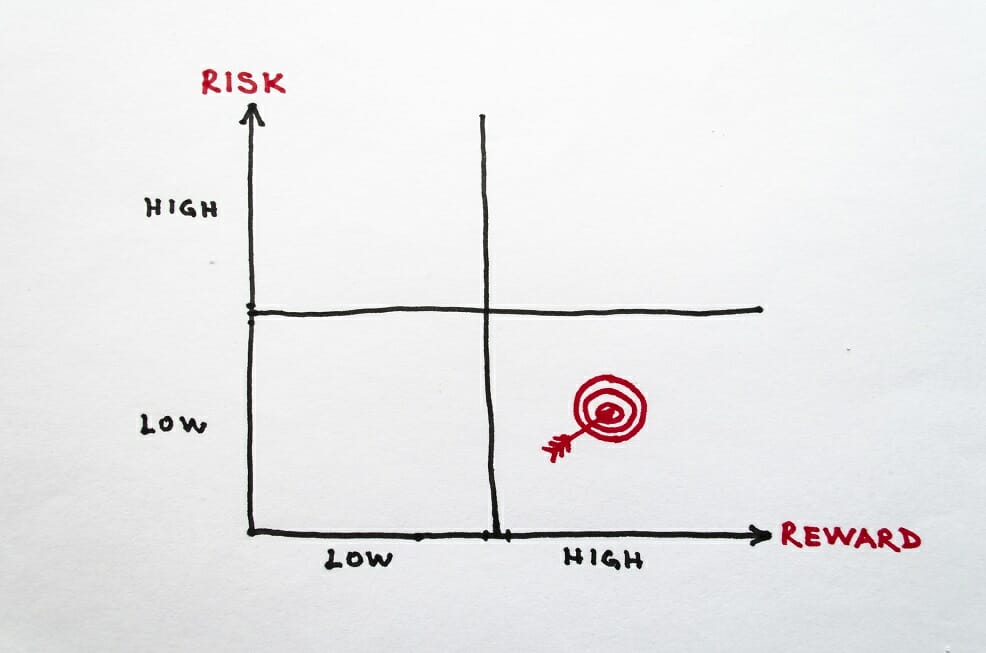4 Charlie Munger Quotes That Will Make You A Better Investor
October 16, 2018
Every investor not living under a rock knows Warren Buffett, Chairman and CEO of Berkshire Hathaway Inc. (NYSE: BRK-A)(NYSE: BRK-B), but they might not be as familiar with Charlie Munger, Buffett’s business partner and Vice-Chairman of Berkshire Hathaway. Munger is Buffett’s right-hand man, and has played an important role at Berkshire Hathaway for decades. Together, these two legendary investors built the firm into the investment conglomerate it is today.
Investors can learn a great deal from the wisdom Munger has gained over many years at the helm of Berkshire Hathaway. Here we take a look at some of his best quotes.
A Remarkable Investment Track Record
Munger’s investment performance — both before and during his tenure at Berkshire Hathaway — is nothing short of spectacular. Munger actually managed his own investment partnership before joining Buffett at Berkshire Hathaway, during which he managed annual returns of 19.8 percent from 1962 to 1975, compared to just 5 percent annually for the Dow Jones Industrial Average over the same period.
Munger and Buffett share a similar investment philosophy. In short, they buy great companies trading for discounts to their intrinsic value. The focus here is on high-quality businesses:
“A great business at a fair price is superior to a fair business at a great price.”
Often, the stock market irrationally discounts companies based on short-term factors, such as geopolitical events, rising interest rates and other macro-economic factors. Buffett and Munger try to buy these undervalued stocks when the market does not appreciate their long-term potential.
Great businesses, according to Munger, are those that have durable competitive advantages, and highly profitable business models. Munger particularly likes businesses that do not require a great deal of reinvestment in order to grow. In addition, investors should focus on investments that are not overly complicated. Sometimes, the best long-term businesses operate in industries that do not experience rapid change.
In addition, investors should carefully consider a company’s management team. Even great businesses can be brought to ruin by incompetent managers. Investors should favor companies that do not require geniuses in the executive suite to be run effectively.
Now that investors have selected great businesses with strong management teams, the next best thing they can do is be patient.
Give It Time
Investors tend to react impulsively. With the often-volatile swings of the stock market, it can be easy for investors to think they always need to respond to daily events by trading in and out of their positions. This is a huge mistake, and is one of the biggest reasons why many investors earn weak returns over time. Trading frequently generates trading commissions, and in some cases, tax liability. There is simply no way any investor can know the perfect time to buy and sell stocks.
Because of this, investors should train themselves to ignore the daily fluctuations of the stock market, and instead think for the long-term. Patience is difficult, especially when the market is declining, but is necessary to reap the benefits of long-term investing:
“The big money is not in the buying or the selling, but in the waiting.”
Being patient allows investors to benefit from the magic of compounding interest. Patience is not to be confused with complacency. High-quality businesses do not often trade for significant discounts to their intrinsic values, so when they do come around, investors should pounce. Munger was not a big proponent of diversification. Munger never saw the reason to buy additional stocks just for the sake of diversification, when the best ideas should get the bulk of an investor’s attention:
“Our experience tends to confirm a long-held notion that being prepared, on a few occasions in a lifetime, to act promptly in scale, in doing some simple and logical thing, will often dramatically improve the financial results of that lifetime. A few major opportunities, clearly recognized as such, will usually come to one who continuously searches and waits, with a curious mind that loves diagnosis involving multiple variables. And then all that is required is a willingness to bet heavily when the odds are extremely favorable, using resources available as a result of prudence and patience in the past.”
Munger’s apathy toward diversification runs contrary to a cornerstone principle of many investors. But given his remarkable investment performance at his own partnership, and then at Berkshire, it is hard to argue with his methodology.
Never Stop Learning
One of the core principles of Munger’s investing philosophy is to learn as much as possible. This is one of the best ways for investors to get better. Munger’s pursuit of knowledge is not necessarily to become more intelligent. It is not always the case that investors with the highest intelligence perform best in the market. Instead, Munger preached wisdom, which can mean different things to different people. To Munger, wisdom is more than simply memorizing facts:
“What is elementary, worldly wisdom? Well, the first rule is that you can’t really know anything if you just remember isolated facts and try and bang ’em back. If the facts don’t hang together on a latticework of theory, you don’t have them in a usable form. You’ve got to have models in your head. And you’ve got to array your experience — both vicarious and direct — on this latticework of models. You may have noticed students who just try to remember and pound back what is remembered. Well, they fail in school and fail in life. You’ve got to hang experience on a latticework of models in your head.”
The takeaway for investors is that it is entirely possible to do well in the stock market, and you don’t have to be an investment banker or possess an MBA. Investors can generate strong returns over time, simply by following a few simple rules in the investment selection process. If investors buy high-quality businesses trading for less than their intrinsic value, with strong management teams, and are patient to hold for long periods of time, their performance can measurably improve.

